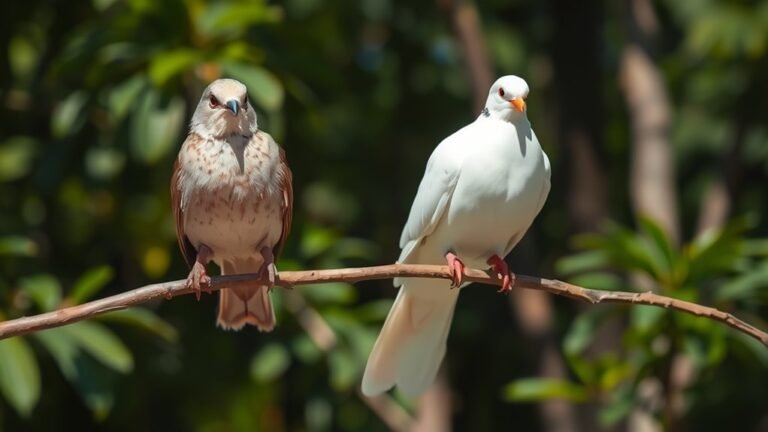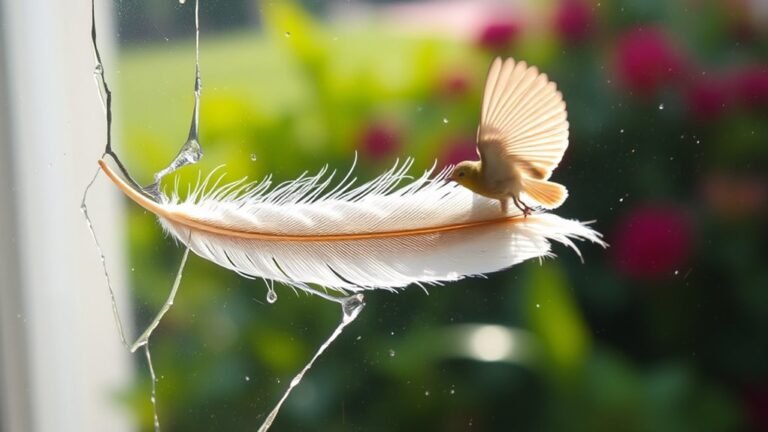The Impact of Oil Spills on Bird Populations
Oil spills pose a serious threat to bird populations. They disrupt bird habitats and harm their health. When oil spills onto feathers, birds struggle to stay warm. This affects their ability to keep their body temperature regulated. Birds often ingest oil while preening, leading to severe health problems. Oil spills cause habitat loss and break up ecosystems, putting food sources at risk. This can also harm birds' ability to reproduce. To protect these bird populations, we must understand the full effects of oil spills and develop effective conservation strategies.
Key Takeaways
- Oil spills immediately damage bird feathers, impairing insulation and leading to increased mortality rates among affected species.
- Ingesting oil during preening causes severe health issues, reducing birds' survival chances and hindering reproductive success.
- Oil spills disrupt habitats, leading to fragmented environments that challenge food availability and nesting behaviors critical for bird populations.
- Health risks from oil exposure include respiratory problems and hormonal disruptions, negatively affecting breeding and survival rates in affected birds.
- Effective recovery efforts are essential, involving wildlife agencies and regulations to prevent future spills and protect bird populations.
Understanding Oil Spills: Causes and Consequences

Oil spills can harm wildlife, especially birds. These spills often happen due to human actions, including drilling accidents, tanker collisions, or pipeline leaks. They cause immediate pollution and disrupt ecosystems over time.
Environmental regulations help prevent oil spills by enforcing safety protocols and promoting technology improvements. Effective regulations can lower the frequency and severity of spills.
By understanding how oil spills occur and the regulations designed to prevent them, you can support stronger protections for bird populations affected by these disasters.
This knowledge creates a collective responsibility and encourages involvement in conservation efforts.
Immediate Effects of Oil Contamination on Birds
Oil contamination severely impacts birds and their habitats. The immediate effects include:
- Feather damage: Oil covers feathers, reducing their ability to insulate and regulate body temperature.
- Oil ingestion: Birds consume oil while preening. This leads to health issues and decreases their chances of survival.
- Behavioral changes: Affected birds may change how they find food and reproduce, putting their populations at risk.
These quick and serious effects show how vulnerable birds are to oil spills. Responding effectively to these incidents is crucial for protecting affected bird populations.
Habitat Loss and Its Impact on Bird Populations

Habitat loss, caused by oil spills and cleanup actions, disrupts the balance needed for bird populations. Cleanup activities often break up habitats, making it hard for bird species to find essential resources.
This fragmentation leads to smaller habitats that can't support a variety of bird communities. Changes in the ecosystem also affect food availability, which can disrupt breeding and nesting behaviors.
Birds that depend on specific areas for food and nesting may find these regions damaged. They must adapt or move to survive.
The ongoing loss of suitable environments can decrease bird numbers and reduce biodiversity. This highlights the importance of restoration and conservation efforts after oil spills to help ecosystems recover.
Toxicity and Health Risks for Oil-Affected Birds
Oil spills pose serious health risks to birds. Exposure to oil can cause harmful effects on their bodies and behavior. Understanding these risks is important for protecting wildlife.
Here are some health issues faced by oil-affected birds:
- Respiratory problems: Oil can damage lungs and make it hard for birds to breathe.
- Breeding issues: Chemicals in oil may disrupt hormones, reducing breeding success.
- Behavior changes: Birds may become disoriented and change how they eat, leading to lower survival rates.
Assessing the health of these birds is crucial for identifying risks. By recognizing the dangers of oil exposure, you can help in conservation and recovery efforts for at-risk bird populations.
Your awareness can support a future where these birds thrive.
Recovery and Rehabilitation Efforts for Affected Species

Recovery and rehabilitation efforts for birds affected by oil spills are essential to repair the damage caused by these incidents.
These efforts face many challenges, such as cleaning oiled feathers and managing toxic effects inside the birds. Specialized care is necessary to help small bird populations heal but can require many resources. Each species needs specific rehabilitation plans, and both time and expert knowledge are crucial.
Successful recovery often depends on teamwork between wildlife agencies, volunteers, and veterinarians. Despite these efforts, not all birds can be saved. Some may experience long-term issues with their ability to reproduce or survive.
Your support for these programs is vital for helping restore ecosystems and protecting endangered bird species.
Prevention Strategies and Their Importance for Avian Conservation
Preventing oil spills is crucial for protecting bird populations and their habitats. Effective strategies can help reduce the risk of future spills and create a better environment for birds.
Here are key strategies to consider:
- Enforce strict regulations on oil drilling and transportation.
- Invest in research to improve containment technologies.
- Create conservation policies that focus on protecting habitats.
These measures protect bird populations and encourage community involvement in conservation.
Advocating for these policies allows you to join a group effort to preserve bird diversity and support sustainable ecosystems for the future.
Frequently Asked Questions
How Do Oil Spills Affect Migration Patterns of Birds?
Oil spills affect bird migration by changing their habitats and food sources. The environmental damage forces birds to adapt or modify their migratory routes. This can decrease their chances of survival and reproductive success in areas that are impacted.
What Specific Bird Species Are Most Vulnerable to Oil Spills?
Endangered bird species, such as the California Condor and various shorebirds, are at high risk during oil spills. Oil can coat their feathers, making them toxic. This oil affects their ability to fly and stay warm. Ultimately, it threatens their chances of survival and reproduction. Protecting these birds is crucial for their continued existence.
Are There Long-Term Genetic Effects on Birds Exposed to Oil?
Birds that are exposed to oil can develop genetic mutations that may reduce their ability to reproduce. These changes can lower their population numbers, which affects the survival and adaptability of these species over time. By understanding these impacts, we can better grasp how environmental factors influence bird populations and their future.
How Can Individuals Help Mitigate Oil Spill Impacts on Birds?
You can help reduce the effects of oil spills on birds. Join community cleanups in your area. Support local wildlife rehabilitation programs. By participating in these activities and donating to relevant organizations, you make a positive impact. You also connect with people who care about the same cause. Your involvement matters.
What Role Do Citizen Scientists Play in Oil Spill Recovery Efforts?
Citizen scientists are essential for oil spill recovery efforts. They collect important data and monitor affected locations. This information helps assess the environmental impact of spills. Their involvement raises community awareness and supports restoration initiatives. By participating, citizen scientists make a real difference in recovery efforts.

Hello, I’m Emily Price, the founder of Birds Affection. As a passionate bird enthusiast and spiritual seeker, I’ve always been fascinated by the symbolic meanings and mystical connections between birds and our lives. On this website, I share my knowledge and insights on the spiritual significance of various bird species, exploring their roles as messengers, guides, and teachers. Through my writing, I aim to inspire and educate others on the profound wisdom and beauty that birds bring to our world. Join me on this journey as we delve into the enchanting realm of bird symbolism and discover the hidden meanings behind these magnificent creatures.







